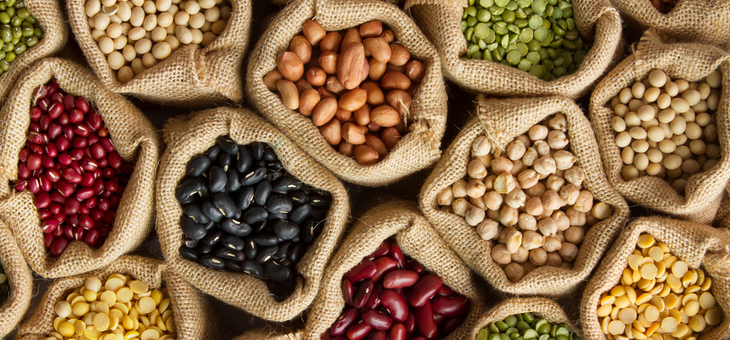We love using beans, pulses and legumes in our recipes. Steer clear of the canned varieties to avoid preservatives and soak and cook your own. This guide tells you all you need to know about handling beans and pulses as well as giving you some of our best bean tips and tricks.
Different beans have different soaking and cooking times (see chart). It takes a few hours to cook beans in an ordinary saucepan. You may prefer to use a pressure cooker as this reduces cooking time.
Choose organic, and buy in bulk where you can, from stores supporting a no-waste policy, which allows you to take your own refillable container. Check that the beans are fresh and do not look wrinkly. When they are more than 12 months old, beans begin to lose their freshness. If you aren’t sure about the age of beans, ask your grocer to place a special order.
Soaking beans is important. It reduces the cooking time and helps the body digest them more easily.
You may need to build up the enzymes required to help your body digest beans well. Start by eating small legumes (lentils, aduki) and when you can digest these easily, move up to a medium-size bean such as black or pinto. Then move on to bigger ones, such as red kidney beans and chickpeas.
Eating a lot of beans and pulses can result in extra air and gas in the body. Beans contain a sugar called oligosaccharide. Humans lack the enzyme required to break down this sugar. When it arrives in the lower intestinal tract, it can ferment and cause a build-up of gas. The gas isn’t absorbed into the intestine, and the body has to expel it, creating that not-so-lovely gassy effect.
To stop the gas when eating beans, start by laying out the dry beans and sorting them for quality, discarding any stones and dried out or discoloured beans. Put the beans in a container, pour over water and leave them to soak to allow the beans’ sugar to be released.
Change the soaking water a few times to prevent the sugar being reabsorbed into the beans.
Cook the beans in fresh, clean water, adding half an onion, half a tablespoon of salt and a bay leaf. Add two pinches of asafoetida (from a local Indian spice stockist), or baking soda or a 10cm piece of kombu (kelp) to the water. This helps to break down the sugar further and avoid the gas. Skim off the foam from the top during cooking.
The beans are fully cooked when completely soft. Most beans will need a second cooking when following recipes for various dishes.
The exception is lentils, which can become mushy if cooked for too long and should be cooked just once. Cook lentils according to the guidelines below, adding chopped carrots and celery to give more depth of flavour. Add peppercorns and Farmacy Seed Mix and an equal volume of liquid to lentils.
Aquafaba
Aquafaba is the common name for the cooking liquid from beans and legumes, which is usually thrown out after the cooking process. It contains a unique mix of starches, proteins and other soluble plant solids that have dissolved during cooking.
Aquafaba is very versatile, and has a wide range of uses, including emulsifying, foaming, binding and thickening. It can be used to replace egg whites in many recipes too.
Bean soaking and cooking times
|
Type of dried bean, 200g |
Soaking time |
Regular cooking time |
Pressure cooking time |
|
Black |
4–6 hours |
45–60 minutes |
15–20 minutes |
|
Chickpeas |
Overnight |
1½ –2½ hours |
15–20 minutes |
|
Lentils |
1–2 hours |
20–30 minutes |
Not recommended |
|
Mung |
Overnight |
15 minutes |
Not recommended |
|
Split mung |
30 mins |
8–10 minutes |
Not recommended |
|
White |
Overnight |
45–60 minutes |
4–5 minutes |
Tips
Soaking and cooking times vary for different kinds of bean. If you’re using more than one kind of bean in one dish, cook them separately.
You can use the cooled cooking water to water the houseplants – they love bean water (if unsalted).
Be sure to boil and skim the froth from the beans before using a slow cooker or pressure cooker.
Do you cook with a lot of beans? Will you try this method of preparing them to avoid unwanted gas?
If you enjoy our content, don’t keep it to yourself. Share our free eNews with your friends and encourage them to sign up.
Related articles:
Best and worst foods for your liver
Is white meat really healthier than red?
What to eat this winter

